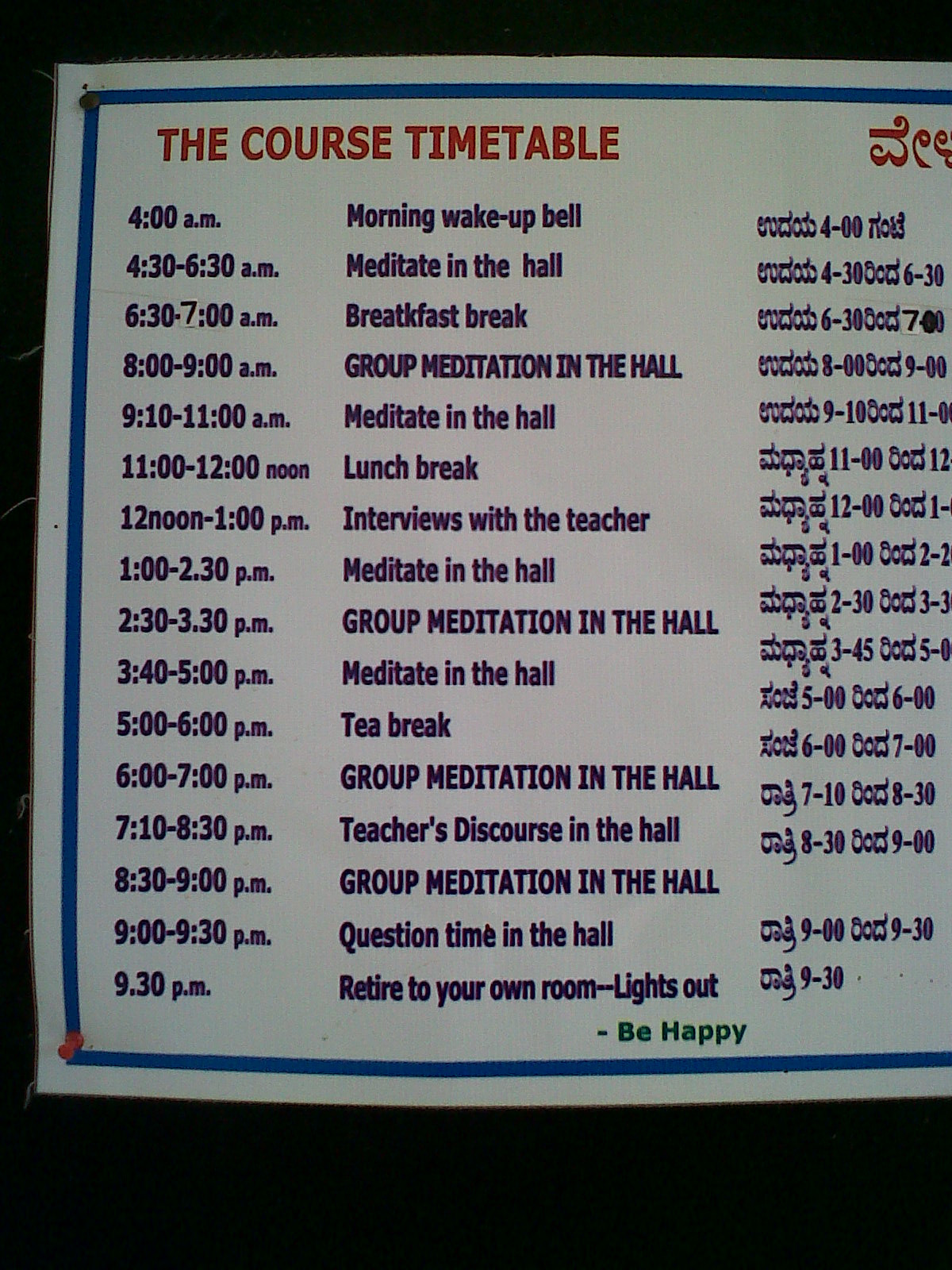A Tibetan lady I met last year in Vienna said to me, “I go to a beauty parlor for my body, but I go to India for my soul.” So, while a trip to the beauty parlor is essential and relaxing, once in a while it is necessary to look within and ensure that things are OK.
I heard about Vipassana mediation many years ago through someone who had attended the course. I vaguely remember her repeatedly saying, “It’s really good, really good. If you get a chance you should do it.” A few months later I met an army officer who had done the course. Again, “It’s really good, really good. If you get a chance you should do it.” And then finally one day I got a mail from the meditation center saying my application had been accepted. I drove down to Alur village, near Bangalore. Little did I know that almost 2 years later, I would be back in Alur to undergo the course again.
The Vipassana Meditation Course is a 10-day meditation retreat where you learn the meditation the Buddha practiced. However, it is not a practice limited to Buddhists. It is a practice that works on an individual’s mind and body. It is a process of observation of the sensations in the body and not reacting to any – i.e. practicing equanimity.
The Important Precepts
At the start of the course students have to take 5 precepts:
(1) not to kill
(2) not to steal
(3) not to commit sexual misconduct
(4) not to speak lies
(5) refrain from intoxicants.
In addition to these there are 3 more precepts for the old students:
(6) abstain from eating after midday
(7) abstain from bodily decorations
(8) abstain from using high or luxurious beds.
Furthermore, students are not allowed to indulge in other meditation techniques, rites or rituals, any form of worship and any physical exercise during the course. Also, students are not allowed to wear/use rosaries, religious objects or talismans. And lastly, all students have to take a vow of silence.
My Experience
While not speaking, and for that matter, communicating in any way, for 10 days may sound very difficult, I assure you that not eating after midday for 10 days is more difficult.
The vow of silence is important for any form of meditation to be successful. In most spiritual discourses inner silence is emphasised over the silence of speech. Many wonder how Vipassana can help cultivate inner silence if the focus is only on external silence. By staying silent we reduce our interaction with the external world, which helps us focus on our internal world.
I remember how difficult it became to sit for meditation on the 10th day, which is when our vow of silence ended. The daily routine, otherwise, left very little time to talk. After sitting straight for an hour it is essential that you lie down to give your back some relief. Never have I been more grateful for 5 minutes of free time in which I can just lie down and close my eyes. So tiring is the routine that many people would fall asleep in the 10-minute breaks that we had in between our meditation sessions!
Vipassana for Everyone
The technique of Vipassana requires daily practice. An hour in the morning and one in the evening is the minimum requirement. There are no shortcuts in the technique. With consistent practice it gives amazing results. This is what Kiran Bedi found when she arranged for the Tihar Jail inmates to have a Vipassana Meditation 10-Day Course. I suppose even the powers that be agreed because they awarded the Magasaysay Award to her for her initiative.
Everyone has an issue or other in their lives. Some big, some small. Many of us have gone through emotional trauma that has changed us forever. All around us there are manifestations of inner turmoil (backbiting, cribbing, rudeness, nastiness, jealousy, ill will, foul moods etc.). We aren’t impervious to all the negativity around us, but perhaps we can start by reducing the negativity within us. Vipassana can show us how.
I’d say I’m still a novice at meditation, but here’s a blog about another meditation technique I’ve tried.

1 Comment
[…] driving myself to yoga classes, to driving across the city for teaching gigs. My Alto took me to Vipassana twice, parked in the dusty parking lot for all 10 days, both times. In 2011, I took it to SVYASA to […]